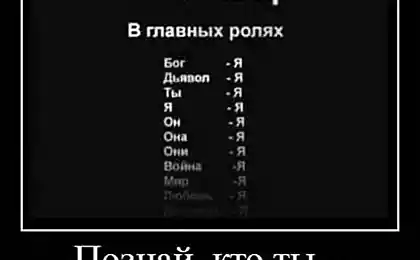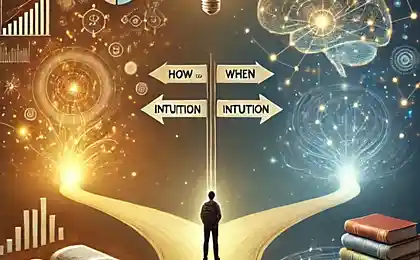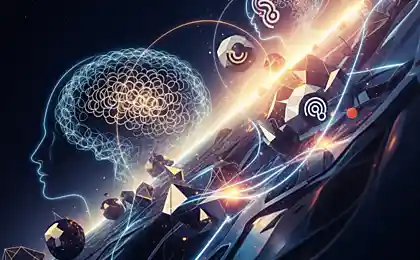208
7 Types of Coincidences in Your Life That Are Not Random
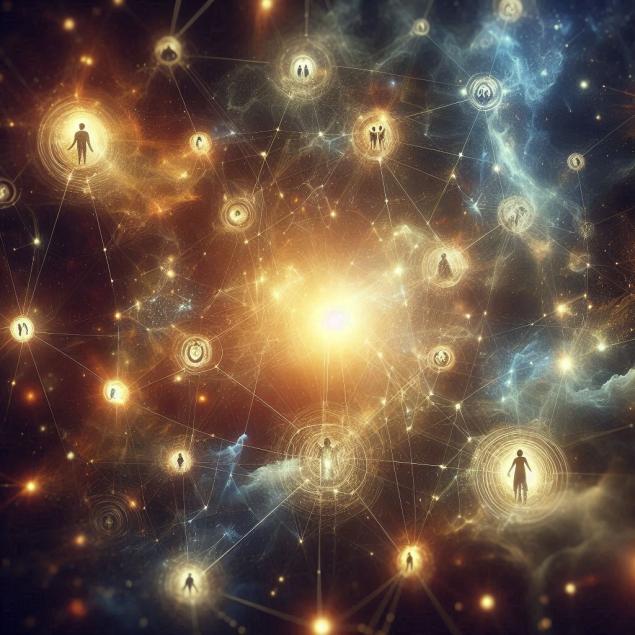
Accident is the pseudonym God uses when he wants to remain incognito.
Ecology of life. Psychology: In the life of absolutely every person there are non-random or as they are called synchronous events. These are moments when the universe winks at us, when causality seems too improbable to be a mere coincidence. Many philosophical traditions and modern research in quantum physics and psychology suggest that such coincidences are more than just statistical anomalies.
What if these coincidences are beacons to our personal growth? What if they are messages that we need to decipher to better understand our purpose? Let’s explore seven types of non-random coincidences that can have profound meaning in your life.
1. Synchronistic meetings with the right people
Have you ever wondered why some people come into your life when you need them the most? When you ask an inner question and suddenly meet a person who offers an answer without your request? Psychologist Carl Jung called this “synchronicity” – meaningful coincidences that have no cause-and-effect relationship, but have a semantic connection.
According to a study published in the journal Social Psychology Quarterly, people who are open to new acquaintances and experiences are on average 35% more likely to report encounters that subsequently have a significant impact on their life path.
These encounters often occur during periods of significant life transitions or when we are at a crossroads. A person who appears in your life “accidentally” can become a teacher, partner or catalyst to help you move on to the next stage of your development.
Practical advice:
- Pay attention to people who reappear in your life or at critical moments.
- Ask yourself, “What can I learn from this person?”
- Keep a diary of significant meetings to track patterns
2. Repeated numbers and symbols
Do you start noticing certain numbers or symbols everywhere: on watches, car numbers, checks from stores? Many cultures attach particular importance to such numerical sequences. For example, 11:11 is often interpreted as a portal of opportunity or a wake-up call.

Numerical synchronies can be signals from our subconscious
From a scientific point of view, this phenomenon can be explained by selective attention and confirmatory cognitive distortion – we notice what we are attuned to. However, many psychologists, including followers of the Jungian school, suggest that such recurring symbols may be manifestations of the work of our subconscious mind, which thus tries to convey important information to us.
How to work with numerical synchronies:
- Write down which numbers or symbols you see again.
- Pay attention to your thoughts when these numbers appear.
- Explore different cultural and personal interpretations of these symbols
- Ask yourself, “What message can I get through this symbol?”
3. Intuitive premonitions that come true
Do you know the feeling of simply “knowing” something without rational explanation? It can be a premonition of an event, an understanding of someone’s true intentions, or an unexpected decision that later turns out to be right. Research in neuroscience shows that intuition is based on processing information in the unconscious part of the brain, which can account for more data than our consciousness.
“Intuition is the unconscious intellect that sees what consciousness cannot see.” – Malcolm Gladwell, author of Illumination: The Power of Instant Decisions
Psychology professor Gary Klein, who has studied expert decision-making under high stress, found that intuitive decisions are often based on recognizing patterns we are unaware of. Our brain registers subtle signals and connections that our consciousness does not notice.
How to develop intuition:
- Practice mindfulness and meditation, which strengthen the connection with the subconscious
- Write down your premonitions and track how accurate they are.
- Listen to physical sensations (such as “feeling in your stomach”)
- Create moments of silence in your daily life to listen to intuitive cues
4. Synchronicity in the information flow
Did you ever find it strange that you just learned a new word and then started seeing it everywhere? Or did you think about a concept and then stumble upon an article or conversation about it? This phenomenon, known as synchronicity in information flow, is a testament to how our attention shapes our reality.
According to Jung’s theory of synchronicity, when we focus on a particular idea or problem, we activate filters in our minds that help us notice relevant information that may previously have gone unnoticed.
However, sometimes these coincidences are so specific or timely that it is difficult to explain them by mere coincidence. They may indicate that we are heading in the right direction, or provide the information we need for our current path.
How to use information synchronization:
- Pay attention to recurring topics in books, conversations, social media
- Ask questions about the universe and be open to answers coming from different sources.
- Use the technique of “random book” – open the book on any page for unexpected insights
5. Deja vu and time loops
Feeling that you have lived a moment or situation before is known as déjà vu. Neurologists explain this phenomenon as a temporary mismatch in the brain – a memory is formed a little before the perception of the event ends, creating the feeling that this has already happened.
However, many philosophical and spiritual traditions give déjà vu a deeper meaning. In some cultures, it is seen as a glimpse of parallel lives or timelines, in others as a sign that a person is on his true path.
Studies show that about 60-70% of people have experienced déjà vu at least once in their lives, and this often happens to people with a rich imagination and high sensitivity to the details of the world around them.
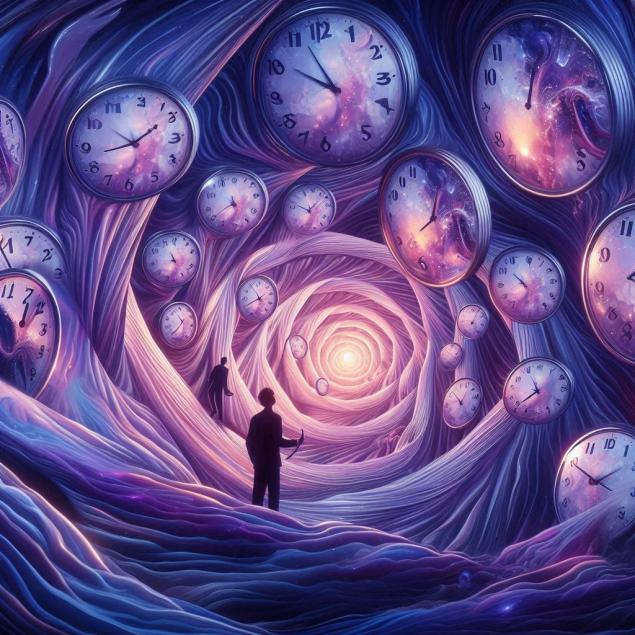
Deja vu can be a signal of a significant point in our life path.
How to interpret deja vu:
- During the experience of deja vu, stop and pay attention to the details of the situation.
- Ask yourself, “What should I learn in this repetitive situation?”
- Write down the experience of deja vu in a diary, noting your emotions and thoughts
- Investigate whether the situation is related to some unresolved issues from the past.
6. Synchronicity in interrupted actions
Have you ever noticed that being late for a train or having an unexpected car break down led to something positive? These interrupted actions may be a form of the universe’s defense mechanism or a manifestation of what some call “divine intervention.”
Psychologist Michael Shapiro, in his research, proposes the concept of “creative interruptions” – moments when our planned trajectory is disrupted, opening up space for new, unforeseen possibilities.
“When life puts obstacles in your way, it may be trying to steer you toward a better path.” - Unknown author
How to deal with interrupted actions:
- When faced with an obstacle, ask yourself, “What if it’s not against me, but for me?” ?
- Use unexpected delays to reflect and revise your plans
- Practice flexibility and openness to changing your route
- Pay attention to the opportunities that may arise from interrupted plans.
7. Cyclical life lessons
Have you noticed that certain types of situations repeat themselves in your life until you learn a lesson from them? It can be a repetitive type of relationship, professional challenge, or personality crisis. These cycles are rarely random—they reflect deep psychological patterns that require our attention and transformation.
Research in psychology shows that people who are able to recognize and learn from recurring patterns in their lives exhibit significantly higher levels of psychological stability and life satisfaction.
From an evolutionary psychology perspective, such repetitive life lessons can be seen as an adaptive mechanism to help us develop the skills and strategies needed to survive and thrive. From a spiritual perspective, these are opportunities for soul growth and expansion of consciousness.
How to work with cyclical lessons:
- Identify recurring patterns in your life (e.g. relationships, careers, health)
- Ask yourself, “What lesson should I learn from this situation?”
- Look for the root cause of the pattern, often rooted in childhood or early adolescence
- Work with a psychologist or coach to change core beliefs
- Practice mindfulness to recognize the beginning of a repetitive cycle and choose new reactions.
Coincidences as a Map of Your Personal Evolution
Non-random coincidences in our lives can be seen as a navigation system that helps us find our way in a complex reality. They can be signals from our subconscious, pointers from the higher self, or even manifestations of the collective unconscious.
By learning to recognize and interpret these synchronicities, we gain access to a deeper understanding of ourselves and our lives. We begin to see patterns where we have seen chaos before, and we find meaning in seemingly random events.
Remember that the most important aspect of working with synchronicity is your inner honesty and openness. Be prepared to hear messages that may conflict with your current plans or beliefs. It is in this contradiction that the potential for the most meaningful personal growth often lies.
Start paying attention to the “accidents” in your life today and you may be surprised at how rich and meaningful your journey will become.
Glossary of terms
Synchronicity
The concept, introduced by psychologist Carl Jung, describes meaningful coincidences that have no cause-and-effect relationship, but have a semantic relationship and are perceived by a person as non-random.
Cognitive Distortion of Confirmation
The tendency to seek, interpret, and remember information in a way that confirms existing beliefs or hypotheses.
Selective attention
A psychological process in which a person focuses on certain aspects of sensory information while ignoring other stimuli. It may explain why we start noticing certain numbers or words after paying attention to them.
deja vu
From the French "déjà vu" - "already seen", a phenomenon in which a person experiences the feeling that the current situation has already occurred in the past, although there is no objective evidence for this.
The collective unconscious
Carl Jung's term for the part of the unconscious that is common to all people and contains archetypes - universal images and motifs present in all cultures.
Intuition.
The ability to understand or know something without conscious reasoning; a direct comprehension of truth, fact, or reality, independent of rational thought.
Psychological patterns
Repetitive ways of thinking, feeling, and behaving, often resulting from early life experiences and becoming automatic responses to certain stimuli or situations.















